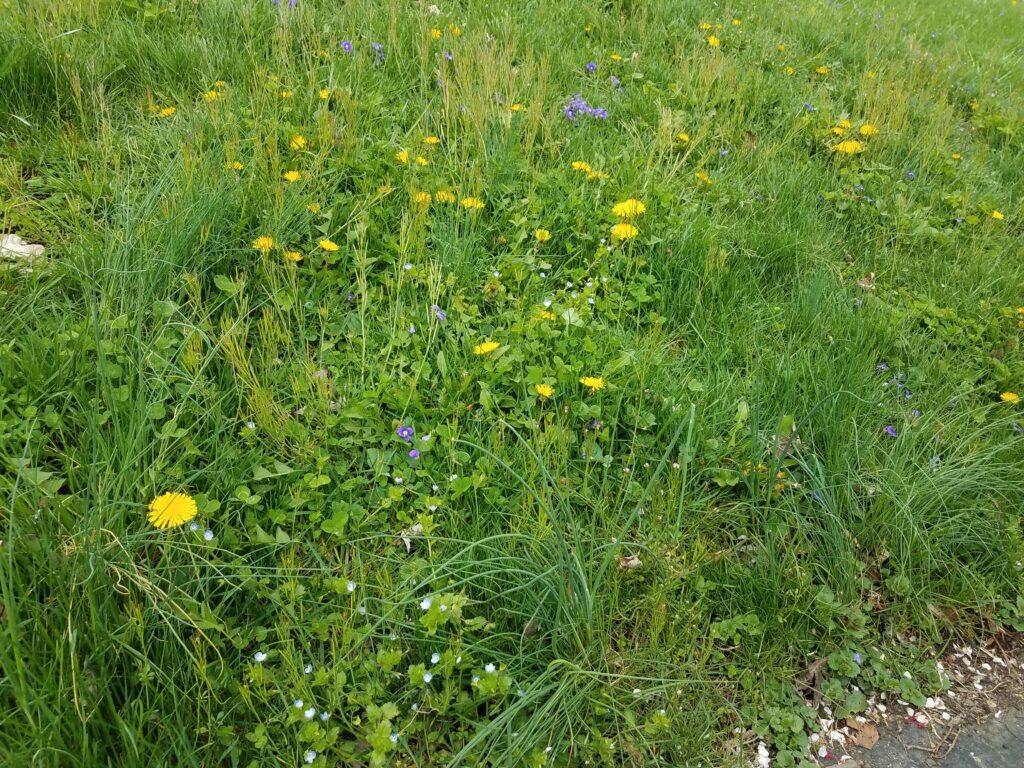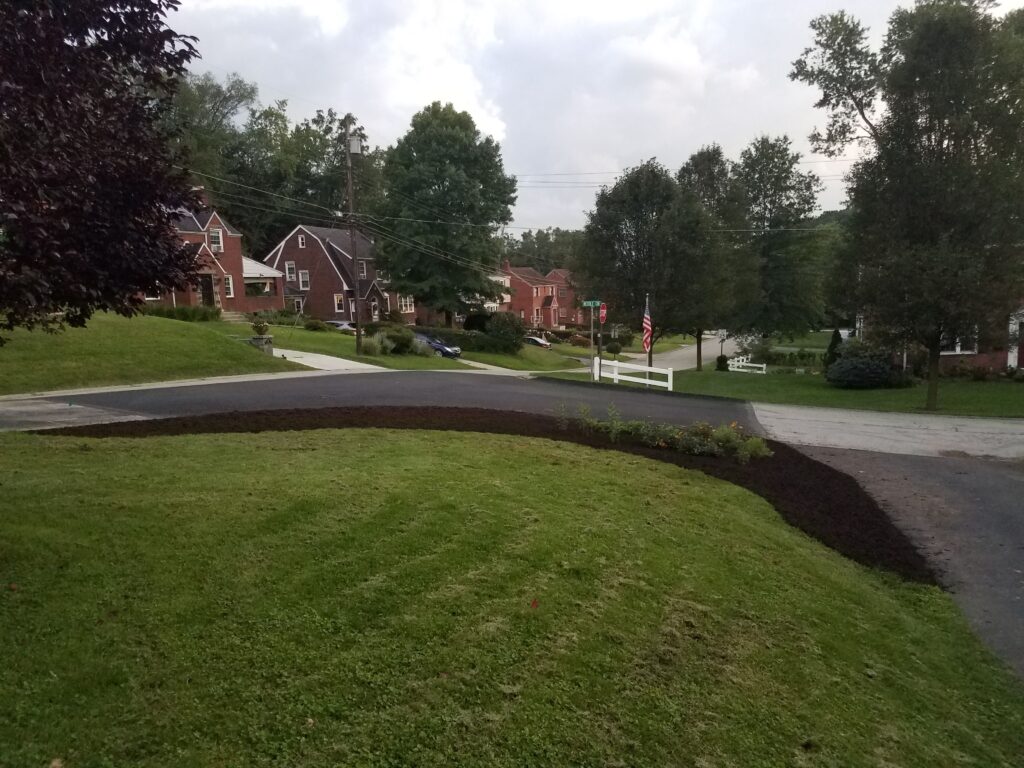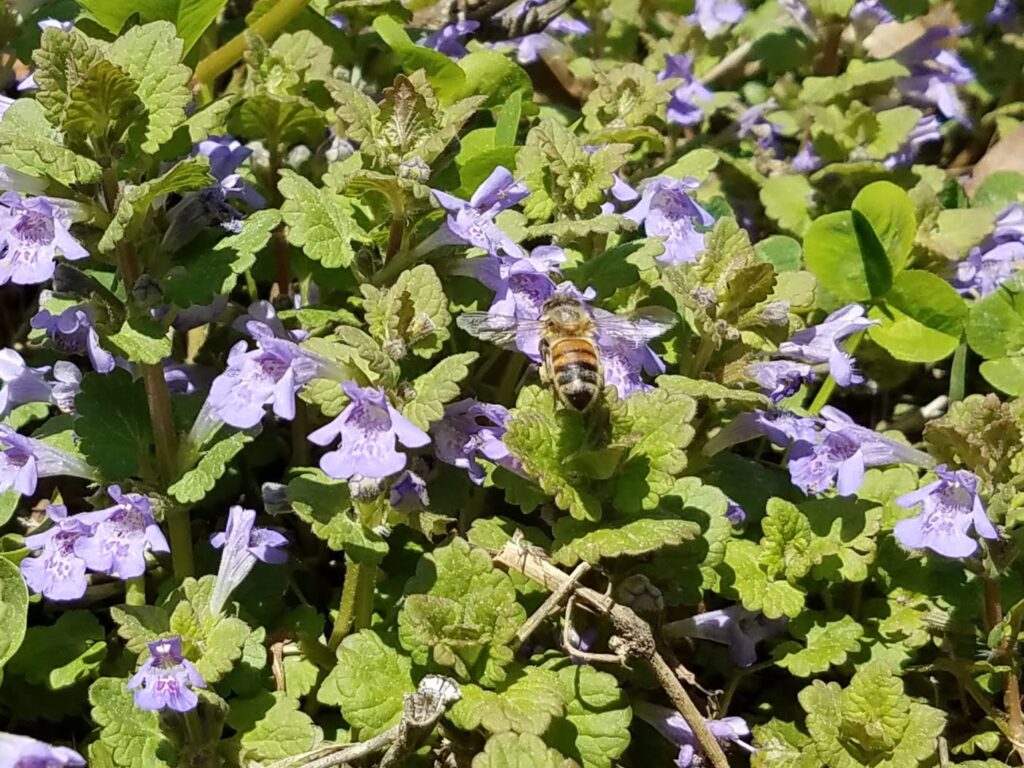American Craft Beer Week [1] and my Equity in Brewing series [2] took precedence on the blog this month, but there are plenty of other exciting things going on in May, as it is the best month of the year, in my completely unbiased opinion. You may have heard some buzz around “No Mow May” earlier in the month, a movement to help support pollinators in the early days of spring before flowers begin busting out all over in June. As I’ve written about before, there are some simple things you can do to help pollinators that often involve less work than standard, socially acceptable gardening practices,[3],[4] and No Mow May is one of them.
This movement began in the UK as an initiative of Plantlife, a charitable organization focused on wild plant conservation.[5] (It now occurs to me that Vegan January, which I wrote about a few months ago,[6] is also a UK-based initiative, so kudos to the UK for several plant and animal-focused viral trends.) The idea behind No Mow May is exceedingly simple: don’t mow your lawn during the month of May, and the wildflowers in your lawn will spread. After May is over, participants can start mowing again, but the organizers also ask people to count and report the number of wildflowers growing in randomly chosen square meter patches in their yards so Plantlife can track the spread of wild flowers.

The Lawn
I have opined before about the American obsession with lawns, particularly how unnecessary, wasteful, and boring they are.[7] The lawn is the biggest “crop” in America, demanding irrigation, pesticides, fertilizers, and gas to power the tools to maintain them, representing a $36 Billion (with a B) industry in 2019.[8] There are some programs throughout the country (particularly in drought-prone areas, such as the southwest) that offer rebates to homeowners who replace their lawns with climate appropriate gardens, helping to reduce the drain on drinkable water going into the ground.[9]
That’s certainly something I’ve been working on for the past few years: ripping up sod and extending garden beds with native plants, which (due to being native) require less watering once they’re established. But, writing this post after a marathon planting session, I am fully aware of how much work that is, and that not everyone may want to spend massive amounts of time (or money) converting their lawns into gardens.
Amusingly, one of the arguments against No Mow May was that it would be harmful to lawn care companies, as they would get less business during that month. I would argue that if we can determine that the vast amount of resource use required by maintaining a lawn is bad for the environment, using lawn care companies as the reason why we should keep up the American lawn tradition alive has no logical basis. It’s like saying that we should keep using styrofoam containers to protect the livelihoods of people who work in styrofoam manufacturing facilities. I would further argue that this potential behavior shift demonstrates a great need for eco-friendly landscaping / lawn care companies, particularly for people who want to help the environment but don’t want to (or can’t) spend massive amounts of time doing yard work.

Unlike almost all of my neighbors, I don’t use a lawn care company (I know you’re shocked to hear that). Instead, a simpler method I’ve used to help reduce the need for watering, fertilizing, and excessive mowing is planting clover in areas that will probably stay lawn, even after my multi-year garden expansion plans are done. There are many reasons why clover is an especially valuable alternative to grass: it is tolerant of tough growing conditions, meaning it doesn’t require extensive watering or chemicals; it is low to the ground and green, meaning you can mow less often while staying in compliance with local ordinances; it is a source of food to pollinators, especially honeybees; and it also pulls nitrogen from the air (meaning fewer greenhouse gasses) and fixes it in the ground (meaning less need for fertilizers).[10]
Downsides of Not Mowing
When I first told Christian that I planned to remove 1000-plus square feet of lawn from our yard to create gardens and sow clover in the remaining grass, I wasn’t sure how he would respond. He was, in fact, thrilled at the idea of mowing less of the yard, less often. He hates mowing and probably wouldn’t be opposed to converting it all into meadow if our borough would allow it, but we’re very aware that they won’t. In fact, when we got back from a two-week vacation last summer, we had a notice from the borough office informing us that our grass was too high.
Local ordinances in our neck of the woods limit grass height to 12 inches, which is actually quite tall. Some of the more well-to-do neighborhoods in Pittsburgh’s South Hills limit grass height to six inches. It is worth checking to see if your municipality waives those requirements in May, however, as some have taken up this pollinator-friendly initiative. If yours doesn’t, you can start a movement and pressure your local council to adopt No Mow May and become a local leader in the effort.[11]

Christian might have been on board with No Mow May if our local ordinances were the only obstacle, but it can be tough to start back up with your lawnmower after the grass reaches a certain height. To get around that difficulty, the organizers recommend starting back with a string trimmer and then following up with a lawnmower later. In any case, the taller you can let your grass grow, the better, so raising your blade height to the highest setting will also help if you’re not going to forgo mowing altogether.
The other issue around here is ticks. Tick counts are one the rise in many parts of the world, particularly the northeastern US, carrying Lyme and other diseases.[12] Tall grasses are an excellent place to pick them up, which is why some other friends of mine decided not to participate in No Mow May… at least not for their whole yard – they do have a small patch that is growing on its own, full of flowers. And that’s another recommendation from Plantlife, particularly if you don’t think you can participate with your full yard: rotate patches of unmowed grass throughout your yard during the growing months to give wildflowers a chance to spread.
~
There are plenty of ways to help pollinators, and many of them come down to just letting nature do its thing. While I don’t know whether we will ever do a No Mow May, I would certainly be in favor of advocating for it on the municipal level and giving residents the option. Until then, I’ll probably continue expanding our gardens and letting our lawn fill up with as many dandelions, violets, and clover heads as possible.
Did you participate in No Mow May or do a variation on it? If so, what kind of visitors did you get? I’d love to hear about it below.
Thanks for reading!
[1] https://www.craftbeer.com/news/american-craft-beer-week
[2] https://radicalmoderate.online/equity-in-brewing-part-1/
[3] https://radicalmoderate.online/spring-garden-cleanup/
[4] https://radicalmoderate.online/fall-garden-cleanup/
[5] https://nomowmay.plantlife.org.uk/
[6] https://radicalmoderate.online/vegan-january-part-1/
[7] https://radicalmoderate.online/organic-lawn-care-milorganite/
[8] https://grist.org/article/lawns-are-the-no-1-agricultural-crop-in-america-they-need-to-die/
[9] https://www.nytimes.com/2015/08/16/opinion/sunday/how-california-is-winning-the-drought.html
[10] https://lawnlove.com/blog/why-choose-clover-over-grass/
[12] https://www.pbs.org/newshour/science/why-lyme-and-other-tick-borne-diseases-are-on-the-rise
0 Comments